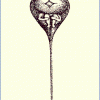This recent article piqued my interest:
Hydrogen Sulfide: The Next Anti-Aging Agent?
http://www.scienceda...30129121945.htm
The evidence is mounting, they note, that hydrogen sulfide slows aging by inhibiting free-radical reactions, by activating SIRT1, an enzyme believed to be a regulator of lifespan, and probably through its interactions with a gene, klotho, which appears to have its own market basket of anti-aging activity.
This got me back to recalling prior threads, conversations and topical discussion of H2S
Could Hydrogen Sulfide Hold The Key To A Long Life?
http://www.scienceda...71203190614.htm
http://www.longecity...-life-of-worms/
researchers found, to their surprise, that nematodes that were raised in a carefully controlled atmosphere with low concentrations of H2S (50 parts per million in room air) did not hibernate. Instead, their metabolism and reproductive activity remained normal, their life span increased and they became more tolerant to heat than untreated worms.
The H2S-exposed worms lived eight times longer than untreated worms...
Roth hypothesizes that H2S, a chemical normally produced in humans and animals, may help regulate body temperature and metabolic activity. Hydrogen sulfide is similar to oxygen at the molecular level because it binds at many of the same proteins. As a result, H2S competes for and interferes with the body's ability to use oxygen for energy production -- a process within the cell's power-generating machinery called oxidative phosphorylation.
The inhibition of this function, in turn, is what Roth and colleagues believe causes organisms such as mice to shut down metabolically and enter a hibernation-like state pending re-exposure to normal room air, after which they quickly regain normal function and metabolic activity with no long-term negative effects.
We know that garlic upregulates Hydrogen Sulfide production. Garlic is known to be heart healthy and act like an ACE-inhibitor.
http://www.pnas.org/...nt/104/46/17977
The consumption of garlic is inversely correlated with the progression of cardiovascular disease, although the responsible mechanisms remain unclear. Here we show that human RBCs convert garlic-derived organic polysulfides into hydrogen sulfide (H2S), an endogenous cardioprotective vascular cell signaling molecule. This H2S production, measured in real time by a novel polarographic H2S sensor, is supported by glucose-maintained cytosolic glutathione levels and is to a large extent reliant on reduced thiols in or on the RBC membrane. H2S production from organic polysulfides is facilitated by allyl substituents and by increasing numbers of tethering sulfur atoms. Allyl-substituted polysulfides undergo nucleophilic substitution at the α carbon of the allyl substituent, thereby forming a hydropolysulfide (RSnH), a key intermediate during the formation of H2S. Organic polysulfides (R-Sn-R′; n > 2) also undergo nucleophilic substitution at a sulfur atom, yielding RSnH and H2S. Intact aorta rings, under physiologically relevant oxygen levels, also metabolize garlic-derived organic polysulfides to liberate H2S. The vasoactivity of garlic compounds is synchronous with H2S production, and their potency to mediate relaxation increases with H2S yield, strongly supporting our hypothesis that H2S mediates the vasoactivity of garlic. Our results also suggest that the capacity to produce H2S can be used to standardize garlic dietary supplements.
Issues:
1. Does anyone have any thoughts on the above? Should we just chalk it up to a SIRT1 activator and examine other SIRT1 activating compounds just as readily as H2S?
2. Various garlic extracts and supplements exist. Some do not contain Allicin (see chart toward bottom containing principal organosulfur compounds: http://lpi.oregonsta...emicals/garlic/). Which garlic supplement should we target?
3. Should we instead be targeting N-Acetylecysteine (NAC) and/or other compounds that stimulate H2S instead? (at least it doesn't smell like garlic...)
Thanks.
Edited by prophets, 31 January 2013 - 08:01 AM.






















































